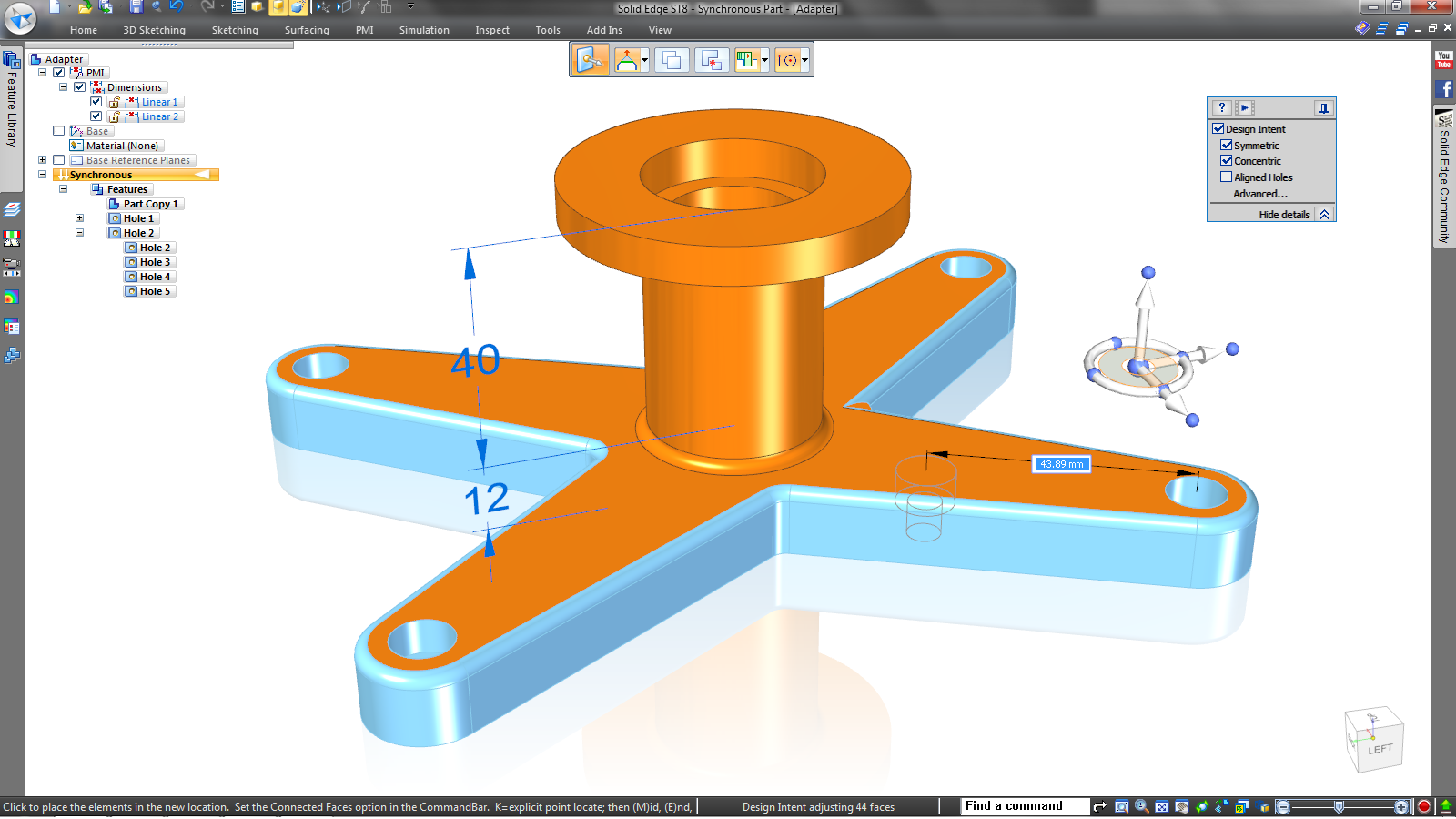Next Generation Design in Solid Edge: What’s That?

Good day. I visited our Canadian Solid Edge family in Toronto and Montréal for Solid Edge University recently, and one of the topics I presented on was Next Generation Design. I thought I’d recap the content here (oh, and they say hello, by the way).
Next Generation Design – Why?
Lets start with why Next Generation Design. I’ll summarze simply in saying the answer is disruption. Disruption in the business world is often what accelerates progress. The hope is that you and your product are the disruptor (the green curve below) and not the ones being disrupted (the yellow line).
 Be the disrupter with Next Generation Design in Solid Edge
Be the disrupter with Next Generation Design in Solid Edge
But hope, of course, is not a strategy. What is a (simple) strategy is:
- Keeping your eye on the latest trends and technology
- Applying them to what you do
You’re already heading in the right direction as you’re reading this. Here at Solid Edge, we’ve collected these hottest topics together for you; that’s what we call Next Generation Design.
Next Generation Design – What?
Okay, so what is Next Generation Design? This should help: Next Generation Design in Solid Edge
Next Generation Design in Solid Edge
Outsiders
Working outside-in are three hot topics (which I won’t cover in detail here, but clicky on the links to look further):
Generative Design – Putting the C in CAD, generating the optimum design to start with – Overview & Demo | Infographic | Webinar | Hands-On
Reverse Engineering – Bringing the physical world into the digital world via 3D scanning (for example, scanning in your clay concept model, or a “was made before we had CAD” part to develop) – Overview & Demo | The Latest in Solid Edge 2019 | Reverse Engineering a Car
Additive Manufacturing – 3D printing, in metal if you want – Overview & Demo | The Latest in Solid Edge 2019 | 3D printing guide
Mind the Gap
Great – end of blog? Not quite. There’s a risk that these topics just become islands of value, disconnected from your actual design work. Why? Because these operate in a ‘different data world’. They’re mesh models; basically, the shape comprises lots of little triangles connected together, which is fine… but your day-to-day designs are solid B-REP models. We therefore need to join these two worlds. I’m happy to report that Solid Edge does exactly this, with something we call Convergent Modeling (basically the convergence of solid and mesh modeling). What does this mean practically speaking? Simply that mesh models feel like solid models. You’re welcome. Clicky for more: Overview with Video | Making a life-size LEGO elephant
 You want to what? Make a life-size LEGO elephant!? Actually, Convergent Modeling can help!
You want to what? Make a life-size LEGO elephant!? Actually, Convergent Modeling can help!
The Center of Your World
Let’s be frank, though: You spend most of your time in the middle of the Next Generation Design graphic, developing your design, and the traditional way to do this is with history-based modeling: a recipe of sketches, features, etc. This method has been around for about 30 years, so I’d say it’s ripe for some disruption of its own, don’t you think? We thought so too, which is why we created a “best of both worlds” ability, mixing history-based and direct modeling. It’s called Synchronous Technology. Practically, what does this mean?
- Fast and flexible design creation
- Quick response to late-stage changes
- Editing imported 3D CAD data
- Improved design re-use from other 3D CAD models
- Simultaneous editing of multiple parts
- Simulation preparation
Other useful links: Explainer Video | Free eBook
 Synchronous Technology in Solid Edge
Synchronous Technology in Solid Edge
Over to You
All in all, these disruptive technologies enable you to be disruptive. But learning about it is one thing. What will you do with it? I’d love to hear your thoughts.



Comments